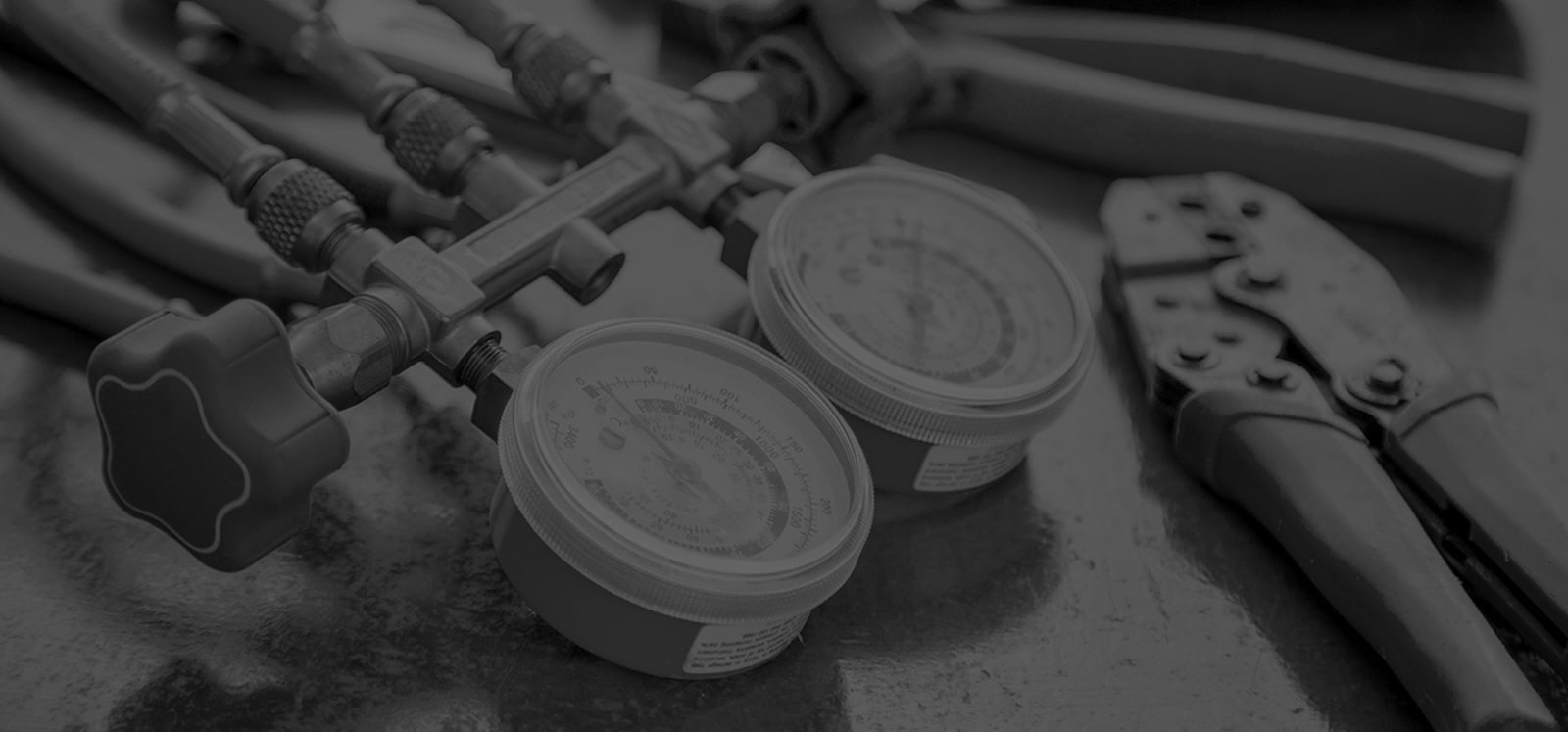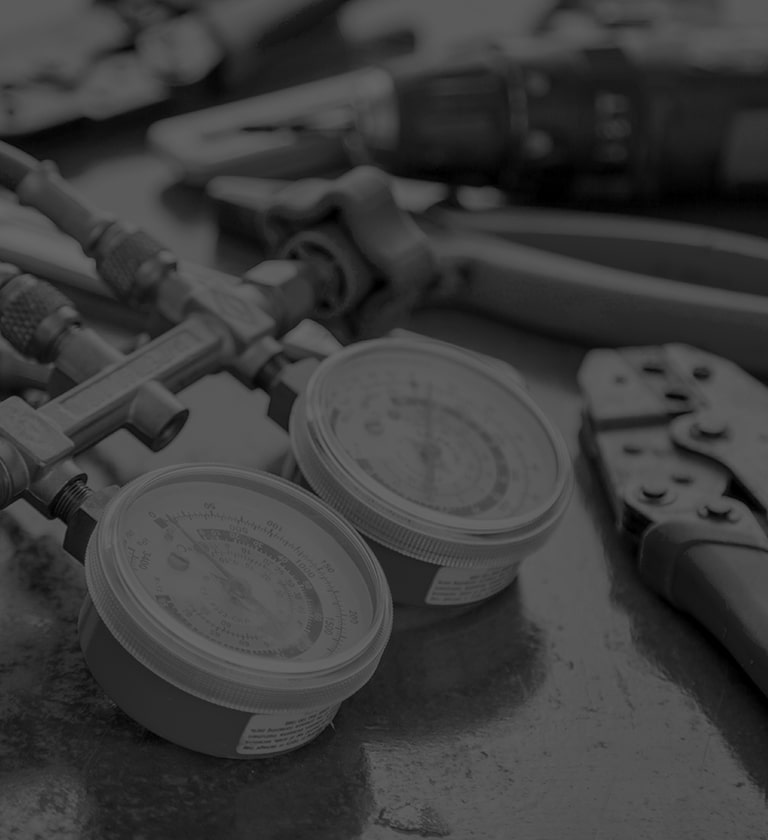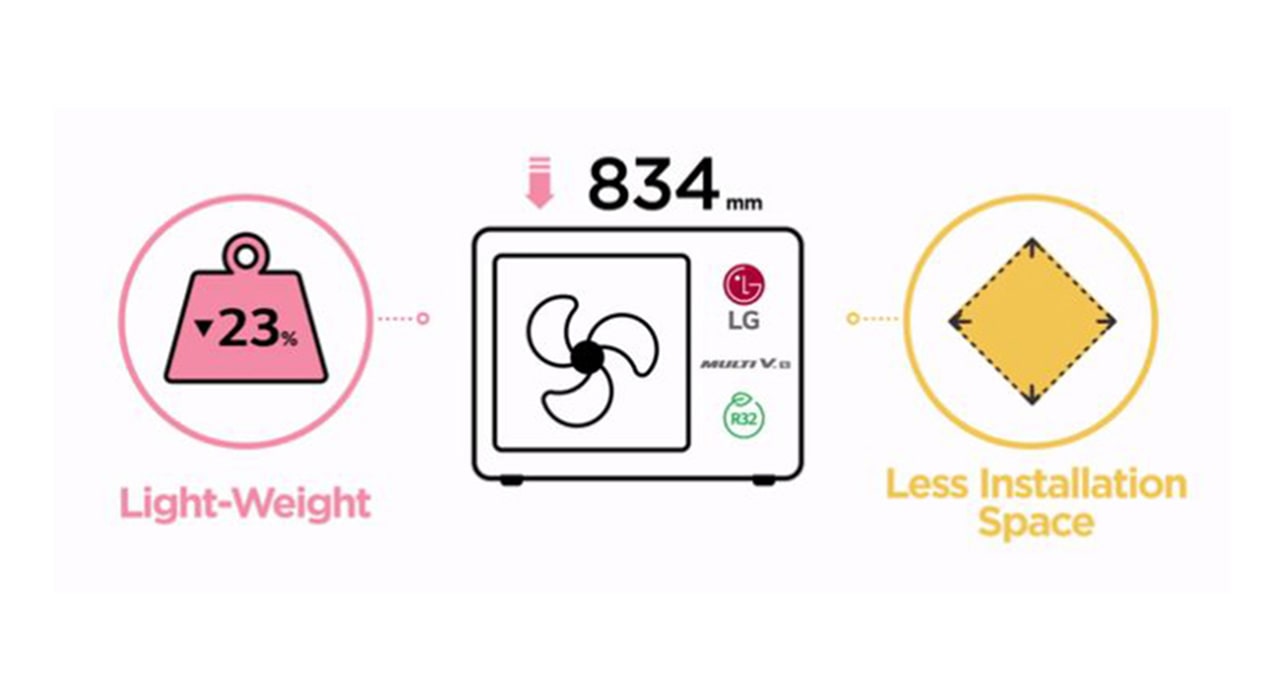-
HVAC systems have many advanced components that ensure performance and keep us comfortable indoors. Compressors, condensers and evaporators are all essential to the cooling and heating process. But there’s another element that doesn’t always stand out when we think of HVAC systems: refrigerant. Refrigerant comes in several different types and is an essential part of the refrigeration process used in HVAC systems. But what are the different types of refrigerants and how are they utilized in climate control to keep us comfortable? Let’s walk through a few types of refrigerants available today and find out how refrigerant works.
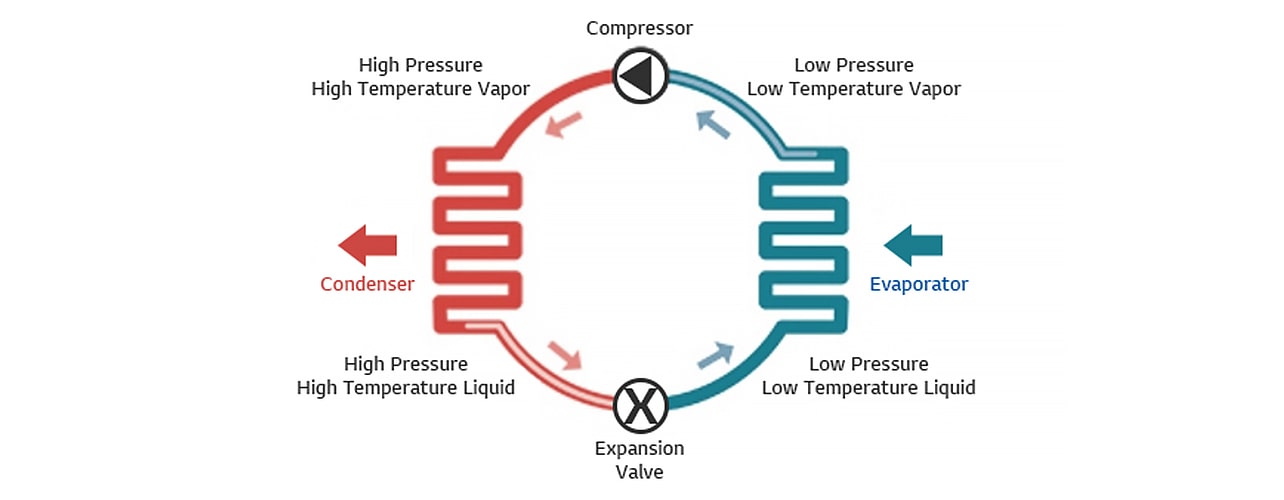
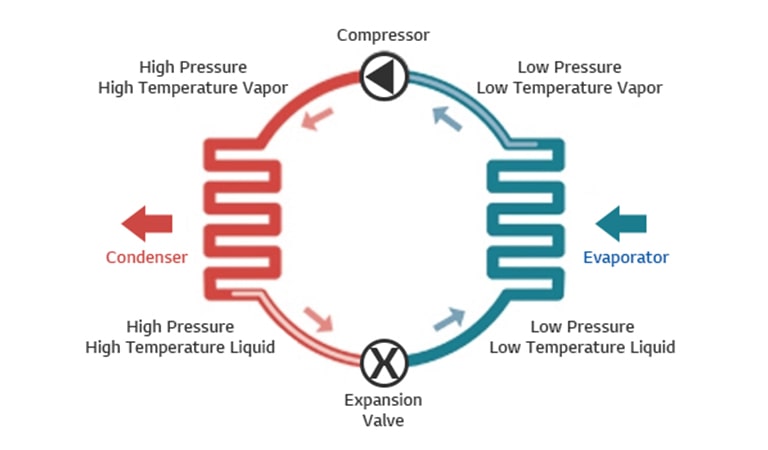
-
What is Refrigerant?
In simple terms, refrigerant is a fluid that is circulated through a refrigeration system and goes through a process of thermal exchange to move heat from one place to another. This fluid is converted into low pressure gas and removes heat from indoors to providing cooling indoors in an air conditioner. It is contained within the coils of an air conditioning system. If we start in the compressor, refrigerant is converted to a high-pressure gas, which causes the temperature to rise. The hot, high-pressure gas then moves to the condenser where it is cooled and converted into a hot liquid. A fan blowing over the coils dissipate heat of condense. The hot liquid refrigerant moves through an expansion valve where it cools to become a 2 phase (gas & liquid mixture) gas. Once it is cooled, the cold refrigerant moves into the evaporator where it cools the room air and as it evaporates into a gas. It draws heat from the space and takes that heat back into the compressor. This process is repeated as the air conditioner continues to cool a house or building. The process seems complex but it is applying some basic thermodynamic principles to allows air conditioners to keep us cool.
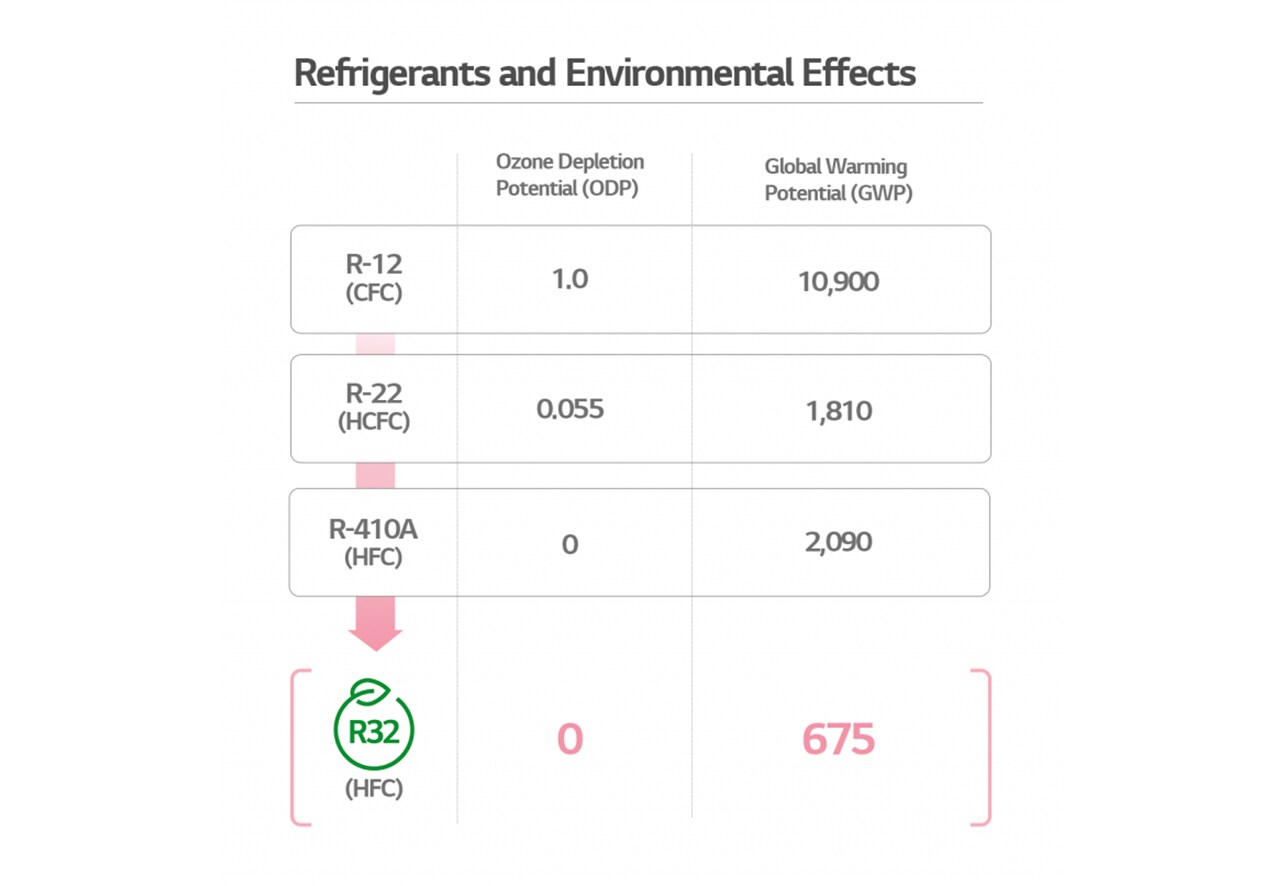
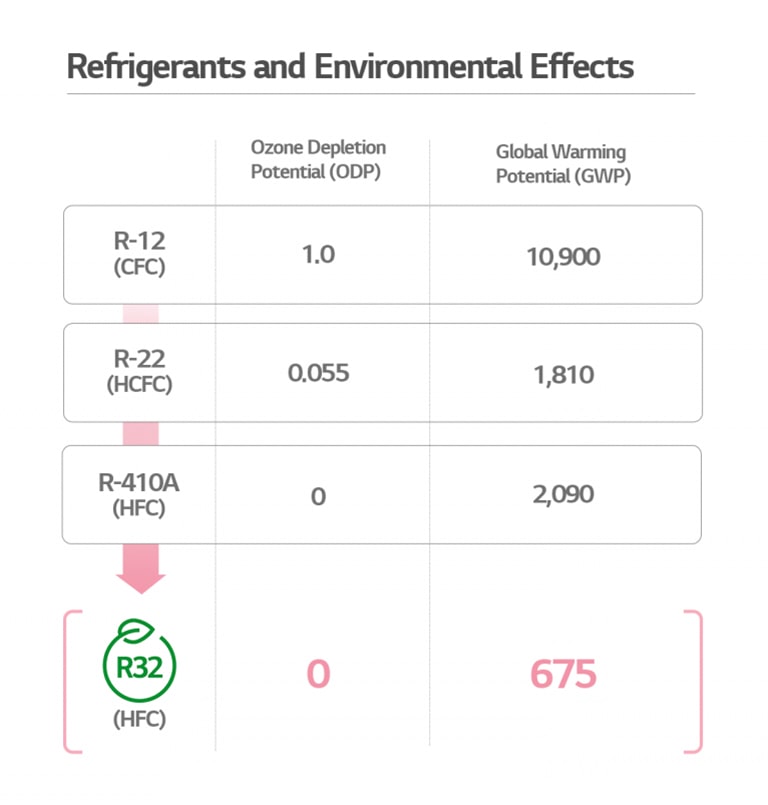
-
The Refrigerant Spectrum
Refrigerant has evolved over the years as we’ve attempted to make HVAC systems more efficient and more eco-friendly. But there are still a number of different refrigerants being used today. Let’s look at the most prevalent refrigerant out there. While there are still some older HVAC systems that use refrigerants such as R-22 that are known to be very harmful to the ozone layer and the environment, these days most systems use refrigerants that are much safer. R-410A was the primary successor to R-22 as a refrigerant that has no impact to ozone (R22 GWP:1810, R410A GWP:2088). R-410A is the most common refrigerant used in HVAC systems to this day. However, R-410A will ultimately be phased out and replaced with refrigerants like R-32, which is used in some LG HVAC solutions. R-32 conveys heat more efficiently than other refrigerants and can reduce the consumption of electricity. It also has a GWP that is 1/3 that of R-410A and an ozone depletion potential of 0, making it much more enticing option for use in HVAC systems.
-
Refrigerant is an essential component of HVAC systems and is a driving technology for more environmentally friendly HVAC solutions. As refrigerant technology continues to advance, HVAC systems will also become more efficient and effective at creating safer and more comfortable environments.
Please click the 'INQUIRY TO BUY' banner below to contact your local LG office for further information on solutions and products.





